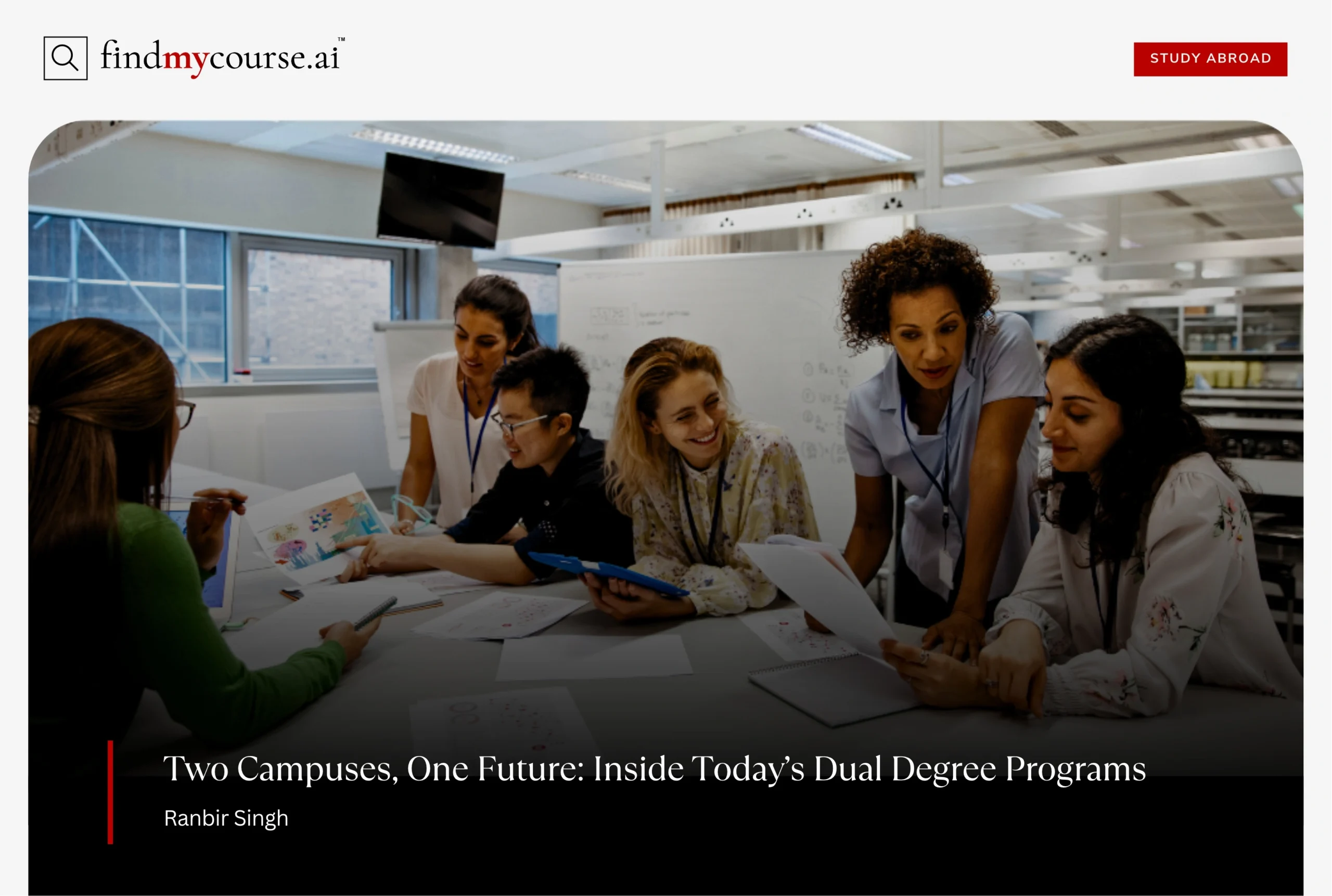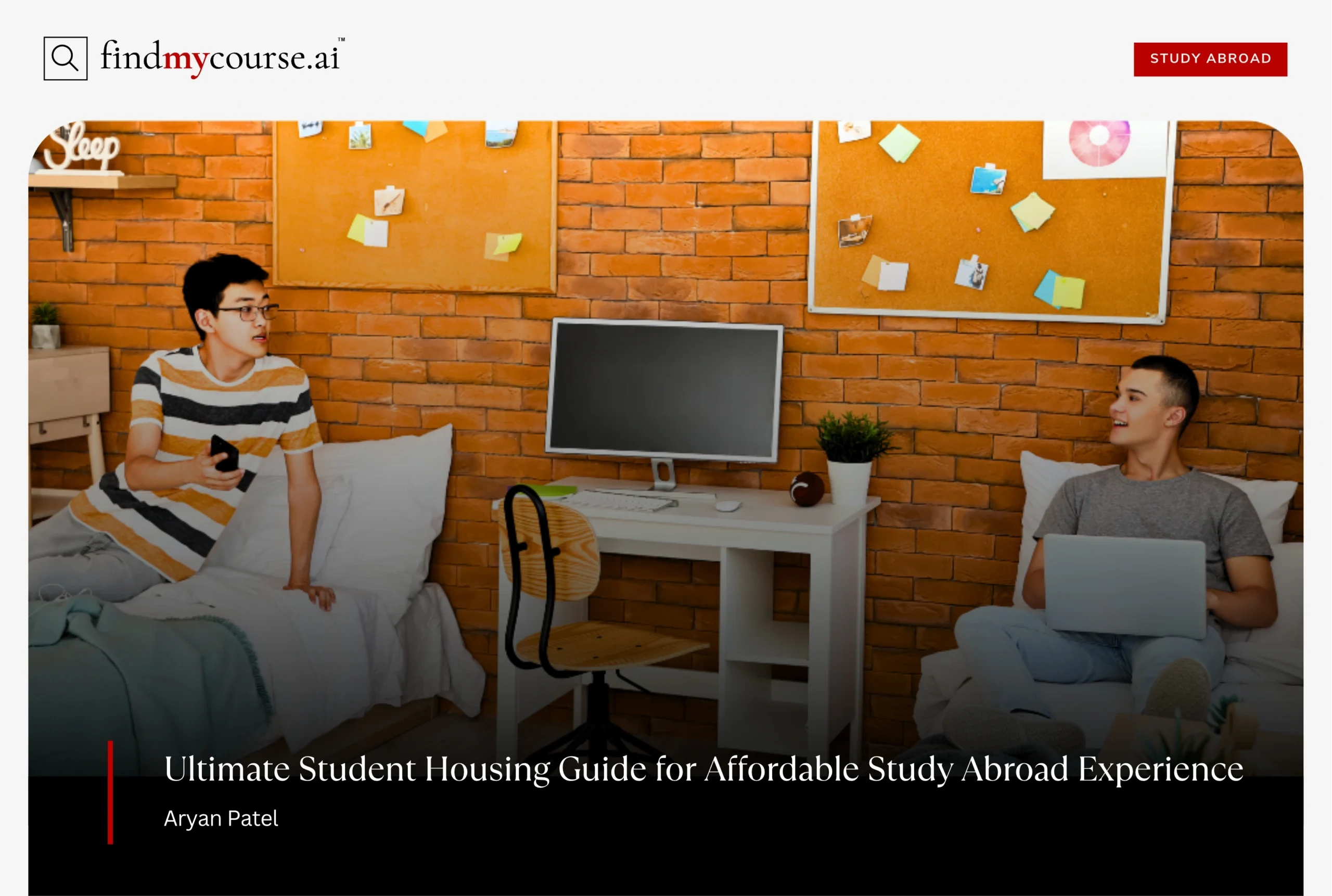The desire to study in the United States continues to grow among many Indian students. With top-class universities, a multicultural environment, and unparalleled career opportunities, the U.S. remains a preferred destination. This guide — Study in USA for Indian Students — walks you through everything you need to know. It covers choosing the best courses in the USA for Indian students, identifying the top universities, and understanding the USA visa requirements. Additionally, it helps in estimating the cost to study in the USA and exploring all available scholarships for Indian students.
Why Study in the USA?
The USA houses some of the most prestigious institutions in the world. With its nature, the educational system is flexible and continues to evolve. Here are some reasons why Indian students choose to study in the USA:
- Academic Excellence: U.S. boasts 8 out of the top 10 universities (QS World Rankings 2024).
- Diverse Course Offerings: A variety of courses. From data science to filmmaking.
- Recognition: Degrees obtained in the USA hold great value worldwide.
- Cultural Diversity: Enrollments of over 1 million international students, including 250,000+ Indians.
- Job Opportunities: Global companies, as well as OPT, may be accessible after completion of studies.
Top Universities in the USA
The following are some of the prestigious universities to study in USA for indian students:
1. Massachusetts Institute of Technology (MIT)
- Known for STEM fields.
- Considerable Indian student population.
2. Stanford University
- Ideal for entrepreneurs in the Silicon Valley.
3. Harvard University
- Ivy League institution with strong research programs.
4. University of California, Berkeley
- Strong in Computer Science, Business, and Engineering.
5. Carnegie Mellon University
- Ranked very high in Computer Science and AI.
6. University of Illinois Urbana Champaign
- Outstanding in Electrical Engineering and CS.
7. University of Southern California (USC)
- Preferred for its stronger network.
Best Courses in the USA for Indian Students
Whether you are interested in engineering, business, health sciences, technology, or humanities, American universities offer a (worldwide established) curriculum with practical-oriented training and faculty of international standard. Below are some of the best courses in the USA for Indian students that promise both academic excellence and good post-graduate job prospects, broken down by the field of study:
Computer Science Majors
Due to the booming tech industry and Silicon Valley being considered the cradle of the global tech industry, Computer Science has been ranked very high among Indian students in the USA. Moreover, American institutions specialized degrees in software development, cybersecurity, human-computer interaction, and cloud computing. So, do you want to Study in the USA? That offers a balance! Graduates find job placements with world leaders such as Google, Microsoft, Amazon, and Meta, making it a course with the highest returns on investment.
Electrical and Electronics | Study in USA for Indian Students
Another evergreen option for Indian students, Electrics and Electronics Engineering opens avenues in telecommunications, embedded systems, semiconductors, and robotics. The universities in the USA have the finest laboratories and research grants, where students create innovations that eventually shape the future.
Mechanical Engineering
The Mechanical Engineering course is for students interested in the design, analysis, and manufacture of mechanical systems. From aerospace and automotive engineering to energy systems and robotics, the curriculum is thorough and broad. Furthermore, universities like MIT, Stanford, and Purdue offer top-ranked programs.
Business and Management | Study in USA for Indian Students
It develops leadership skills and offers internship opportunities and networking. Whether you pursue a general MBA or opt for a specialized track in marketing, entrepreneurship, or technology management, business schools in the USA, such as Harvard, Wharton, and Kellogg, consistently attract Indian talent. Furthermore, these institutions provide unparalleled resources and networks that enhance career prospects.
Supply Chain Management
At a time when the entire world has indeed become a global village, Supply Chain Management is a key strategic function in big corporations. For instance, this course includes Procurement, logistics, operations, and international business activities.
Finance
A degree in Finance from the USA enables a student to understand the nuances of financial analysis, risk management, investment banking, and fintech. For Indian students, studying in the USA, where Wall Street and the economy offer internships and career openings in New York, Chicago, and San Francisco, is highly beneficial.
Public Health
Public Health has become a popular field for Indian students in the USA. Considering epidemiology, health policy, and global health, it’s best to engage in healthcare strategy or international organizations like the WHO or CDC. Many programs may also incorporate a practicum or a capstone project that has a strong emphasis on real-world community impact.
Biomedical Engineering
Biomedical Engineering merges biology, medicine, and engineering. That is one of the most interdisciplinary and futuristically oriented fields. The institution is one of the best in medical device design engineering and biomaterials. Thus, Indian students who learned math and biology find this a fascinating and fulfilling area.
Data Science Studies
Data Science is one of the most selling courses in the USA for Indian students to enroll in. It includes statistics, programming, data visualization, and machine learning, featuring high remuneration and ease of application across different industries.
Artificial intelligence Degrees
AI has almost become a way of life for everybody. The various AI courses cover areas concerning natural language processing, computer vision, robotics, and deep learning. The USA presents a very active research environment for machine learning, while the companies seek experts in AI and ML.
AI & Machine Learning
Machine Learning is forming its streams within AI and deals with the creation of algorithms enabling the systems to learn and predict. This course primarily draws engineering and computer science graduates.
Psychology Degrees and Masters
U.S.-based psychology programs offer specializations in clinical, cognitive, and organizational psychology. These courses are a perfect fit for Indian students who have an interest in mental health, human behavior, and research. The universities also impart domain-specific knowledge through internships, clinics, and lab work, incorporating hands-on experience for better academic and clinical grounding.
International Relations
Due to the crucial role the United States plays in global politics, studying International Relations explores the various dimensions of diplomacy, global governance, human rights, and international law. Indian students with aspirations in Indian civil services think tanks, journalism, or global NGOs often consider this major. Additionally, attendance in events, simulations (Model UN), and networking opportunities adds value to the education.
USA Study Visa Requirements for Indian Students
F-1 Visa Eligibility
- Proof of admission to a SEVP-certified institution.
- Sufficient financial resources.
Documents Required: Study in USA for Indian Students
- A valid passport.
- Form I-20 from the institution.
- DS-160 visa application form
- SEVIS fee receipt
- Visa appointment confirmation
- Academic transcripts
- Proof of funds
Interview Preparation: Study in USA for Indian Students
- Be confident and clear.
- Highlight your academic goals.
- Show ties to India (family, career).
Need more info? USA. Embassy & Consulates in India.
The Cost of Study in USA for Indian Students
Tuition Fees
- Public Universities: $20,000 – $35,000/year
- Private Universities: $30,000 – $55,000/year
Living Costs
- Average: $10,000 – $15,000/year
- Includes housing, food, transportation, health insurance
Application & Miscellaneous Costs
- Application Fee: $50 – $100 per university
- Standardized Tests (GRE/TOEFL): $300 – $500
- Visa Application & SEVIS Fee: ~$510
Total Estimated Annual Cost
$40,000 – $70,000 per year (INR 33–58 lakhs/year).
Scholarships for Indian Students in USA
Indian students can significantly reduce their expenses through scholarships. When it comes to studying in the USA for Indian students, a wide range of financial aid options are available to ease the cost burden.
Government Scholarships
University-Specific Scholarships
- Harvard Financial Aid Initiative
- Stanford Knight-Hennessy Scholars
- Yale Need-Based Scholarships
Private & NGO Scholarships
- Tata Scholarship for Cornell University
- AAUW International Fellowships
Application Process in Universities in the USA
- The application procedure may seem overwhelming at first but is quite manageable once broken down into stages. You can search for universities and courses that meet your interests and career objectives. Use sources such as university websites, the College Board, or the USA. Also, use news rankings to compare programs against their tuition fees and location preferences.
- Once you have compiled a shortlist of universities, your next point of focus is on tests. Next, you will need to prove your English proficiency through tests such as TOEFL or IELTS. Depending on whether you are applying for undergraduate or graduate courses, admission might also require SAT, ACT, GRE, or even GMAT scores.
- The next order of business is the required documents, including academic transcripts, your Statement of Purpose (SOP), your resume/CV, and letters of recommendation. These documents help the admission committee understand your background.
With deadlines approaching rapidly in most cases, it is safer to apply through the university’s application portal or a common platform like Common App for verification and safety fee charges. Further, you have to appear for the interview rounds when called by the university. Now comes the waiting stage for decisions regarding your admission (from anywhere between a few weeks to a few months), depending on the institution.
Student Life in America
Students access world-class facilities, libraries, innovation laboratories, athletic centers, and clubs. So, if your interests lie in arts, technology, business, or community service, there is always something happening on the campus!
In contrast to studies, working while studying is encouraged in the USA. Many Indian students find part-time jobs working on campus, which is allowed for up to 20 hours per week. Your experience may also include CPT and OPT, which offer the possibility to have practical training in your field of study during or after your studies. Cultural adjustment is also a part of the journey!
Post-Study Work & Permanent Residency Options
OPT (Optional Practical Training)
- Valid for 12 months (STEM graduates get a 24-month extension)
H-1B Visa
- Employer-sponsored work visa
- Lottery-based system
Green Card Pathways
- EB-2 or EB-3 employment-based categories
- Family-sponsored categories
Tips: Planning to Study in the USA
- Start your application process 12–18 months in advance.
- Keep multiple funding options.
- Practice for visa interviews early.
- Stay updated with immigration and visa policies.
- Connect with networks before departing.
FAQs About American Studies for Indian Students
Q1: What is the minimum percentage required to study in USA for Indian students?
Most universities require a minimum of 60% in undergraduate studies; for competitive programs, the requirement may be 70% or even higher.
Q2: Can Indian students work while studying in the USA?
Of course! Students with F-1 Status may work on their campus for 20 hours a week and full-time during breaks. To work off-campus in your field, you may have to apply for CPT or OPT.
Q3: Are there scholarships that Indian undergraduates may apply for?
Yes, universities offer scholarships. Some associations help with scholarships.
Q4: Do Indian students need the IELTS?
Yes, purely, unless you attended an English medium institution throughout. Most universities accept TOEFL or IELTS.
Q5: What is the best state for Indian students in the USA?
California, Texas, New York, and Massachusetts are among the most popular for their universities, Indian communities, and job market.
Study in USA for Indian Students | Article Conclusion
Studying in the USA offers Indian students world-class education, diverse courses, and unmatched career opportunities. With proper planning, understanding visa requirements, and exploring funding options, Indian students can make the most of this life-changing experience. This guide has equipped you with the knowledge to choose the right courses, universities, and pathways, ensuring a smooth and rewarding journey toward studying in the USA.



10 thoughts on “Study in USA for Indian Students: The Ultimate Guide for 2025”
Comments are closed.